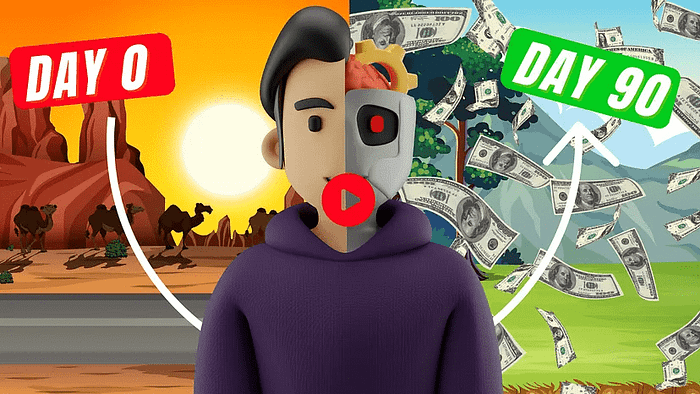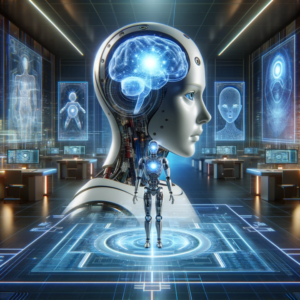We’re in the Early Days of AI Automation—What Happens When Everyone Uses It?
Artificial intelligence whispers a promise of transformation, and I’m convinced it’s already brushing against every job, every industry, every workplace imaginable. Picture a world where repetitive tasks vanish, creative pursuits amplify, and even the most skilled roles evolve beyond recognition. That’s the horizon I see, one where AI doesn’t just assist but reshapes how we define work itself. I’ve spent years navigating this shift firsthand—once leading a team of human writers, now steering an AI-driven venture after leaping into this landscape in early 2023. What began as skepticism turned into awe when I discovered tools blending multiple language models and real-time search capabilities. That revelation pulled me into a role where I now help build a company alongside brilliant minds. Today, I’m here to unpack how AI automation will touch, enhance, replace, or even erase billions of jobs—and what that means for you.
We strongly recommend that you check out our guide on how to take advantage of AI in today’s passive income economy.
Table of Contents
The Journey That Changed My Perspective
Years ago, I ran a writing agency fueled by human creativity, a bustling hub of ideas and deadlines. Back then, I viewed AI with a raised eyebrow, even earning a fleeting reputation as its critic. But everything flipped when I sold that business at its peak and stumbled into AI’s potential. Early 2023 marked my plunge into this world, drawn by a stack of tools that wove together advanced algorithms and instant data access. It wasn’t just one breakthrough; it was a symphony of innovation that hit me like a tidal wave. I landed a leadership role at a company riding this wave, and my days transformed from managing writers to orchestrating AI systems. That shift opened my eyes to a future barreling toward us—one where AI automation isn’t a distant dream but a present reality. Now, I’m driven to show others how to seize this moment, to turn upheaval into opportunity.
Why AI Automation Feels So Urgent
Imagine a toolkit so powerful it can handle tasks we once thought untouchable— that’s where artificial narrow intelligence, or ANI, comes in. It’s not the sci-fi dream of artificial general intelligence (AGI) yet, but it’s already packing enough punch to rethink entire industries. I’ve dug into this distinction before, and it’s clear ANI has nearly everything needed to automate billions of jobs right now. Think about that: we’re not waiting for some far-off leap; the groundwork is laid. What’s wilder still is what lies beyond—AGI and even artificial superintelligence promising leaps so vast they defy comprehension. I believe those leaps will usher in an age of abundance, a time when resources and possibilities dwarf today’s limits. But first, we’ve got hurdles to clear, and that’s what fuels my writing—diving deep into the challenges and chances ahead.
The Books Lighting My Path
My desk groans under a stack of books that shape my thinking, and three stand out right now. First, there’s 1000 Brains by Jeff Hawkins, a mind who pioneered handheld computing with Palm devices. He’s spent decades decoding the neocortex, laying out how neural networks might mirror our brain’s wiring—crucial for understanding AGI’s future. Then there’s The Fourth Age by Byron Reese, sparked by a reader’s suggestion, offering sharp, thoughtful takes on technology’s arc. It’s a gem I can’t recommend enough. Finally, The Coming Wave by Mustafa Suleiman, the DeepMind founder whose work powers Google’s AI strides, delivers insider brilliance on machine learning’s trajectory. These pages aren’t just theory—they’re maps to where AI automation is dragging us, fast.
What the Data Says About Jobs
Back in 2017, McKinsey dropped a study that stopped me cold, even before today’s AI giants like ChatGPT roared onto the scene. They found over 50% of workplace tasks were ripe for automation—six out of ten jobs with activities machines could technically handle. Picture that: more than half our daily grind, from filing reports to crafting strategies, could shift to algorithms. They pegged 800 million jobs—30% of the global workforce—facing displacement by 2030. That’s just six years from now, a blink in historical terms. It’s staggering to think we knew this pre-2020, yet the pace has only quickened. To me, this isn’t doom—it’s a nudge toward a world where mundane work fades, freeing us to chase what truly matters.
Automation as a Gateway to Meaning
What if AI automation isn’t here to steal our purpose but to hand it back? Over 70% of workers today slog through jobs they don’t love, tethered by bills, battling rising tides of burnout and despair. I’ve felt that weight—hours lost to tasks that dulled the soul. But if 60% of our work can vanish into circuits, why cling to it? Shouldn’t we be chasing passions, unearthing what we were born to do? I see this as permission to rethink life—not as endless toil but as space to breathe, create, and simply be. Automation could crack open that door, letting us trade “human doing” for “human being.” It’s a radical shift, and I’m betting it’s closer than we think.
Beyond Partial Automation—Total Transformation
Now, you might argue McKinsey only flagged six in ten jobs for partial automation. Fair point—but brace yourself, because I’m convinced we’re hurtling toward total job automation. A study from January this year, buried in obscurity until a sharp-eyed expert slid it into my inbox, blew the lid off. Over 2,700 researchers—from Berkeley to Oxford—mapped AI’s reach across every field. Their verdict? Every job, from trucking to penning bestsellers, faces full automation by the 2100s. I’d argue that’s too cautious. Week-by-week breakthroughs in the 2020s—think GPT-4 arriving three years after GPT-3, not 50—show acceleration no one predicted. AI automation isn’t creeping; it’s sprinting.
Opportunity in the Chaos
Here’s the twist: total automation doesn’t spell ruin—it’s a goldmine if you’re ready. The economic scaffolding we know might buckle, replaced by systems we can barely sketch today—new currencies, new rules. I’ve got thoughts on a dividends-based model blending Universal Basic Income, Sam Altman’s Universal Basic Compute, and Elon Musk’s Universal High Income—but that’s another dive. For now, know this: the window to adapt is shrinking. Upskill, pivot, and you could thrive in this upheaval. AI automation isn’t just taking jobs; it’s birthing a landscape where agility pays—literally and figuratively.
Voices from the Frontier
The sharpest minds in tech echo this. Elon Musk envisions a world where “no job is needed”—a bold claim, but he’s not alone. Alex Hood at Asana calls out the 50% of work time lost to “work about work”—think endless updates and spreadsheets. AI could torch that busywork, pairing with humans for smarter outcomes. At my company, we lean into this “AIO” mindset—humans steering AI like a finely tuned engine. Then there’s Jensen Huang, Nvidia’s visionary, whose chips power this revolution. At the World Government Summit, he flipped a decade-old script: forget coding, he said—AI will write the code, making everyone a programmer through plain language. That’s AI automation closing divides, fast.
A Clip That Shook My World
Jensen’s words hit like thunder. He stood onstage, unraveling how AI flips the script on tech skills. Once, we urged kids to code; now, he says, AI will handle it, turning human speech into the ultimate programming language. “Everybody in the world is now a programmer,” he declared—a miracle leveling the field. Governments, companies, farmers, educators—anyone with a problem can wield AI to solve it. It’s not just efficiency; it’s amplification, a reset of who holds tech power. He insisted we upskill everyone, pronto, and I nodded fiercely. This isn’t a distant “someday”—it’s now, and it’s thrilling.
New Jobs on the Horizon
Books like The Fourth Age paint this vividly. Reese notes that today’s hottest roles—like app developers or data scientists—didn’t exist a decade ago, and 65% of kids starting school now will land in jobs we can’t yet name. Even with AGI humming, challenges will linger—think ethical dilemmas or creative leaps machines can’t solo. The trick? Predict, prepare, upskill. That’s why I’m buzzing about my upcoming book, Upskill: Become AI-Proof, co-authored with Jeff Joyce. We’ve tapped 15+ experts—like UBI guru Scott Santens—grilling them on work’s future. Their fresh insights, paired with our takes, aim to arm you for what’s next.
Wrapping Up the Rabbit Hole
AI automation isn’t a specter—it’s a spark, igniting a world where jobs morph and meaning deepens. From McKinsey’s forecasts to Jensen’s bold resets, the signs are screaming: this is happening, and soon. My journey—from writer to AI trailblazer—mirrors what’s possible if you lean in. Grab Upskill this November on Amazon; it’s packed with tools to ride this wave. I’d love your thoughts—drop them below. I’m floored by the sharp minds joining me here, and I pore over every comment, even if I can’t reply to all. Let’s keep chasing this future together—see you in the next deep dive.

We strongly recommend that you check out our guide on how to take advantage of AI in today’s passive income economy.




